Of all the plants you could put in a native garden, buckwheat is a must. There are many species of buckwheat available. In the California garden, clusters of pink to cream flowers of California buckwheat are a huge hit with many pollinators, including butterflies and native bees. Not only is buckwheat an important food source for pollinators, but the antics of all the insects will also provide you with hours of entertainment.
California buckwheat is incredibly reliable; plant it and it will bloom — often in its first year. This buckwheat has a pleasing mounded form, showy flowers and richly colored rust-brown seed heads. My motto for garden design: When in doubt, use buckwheat.
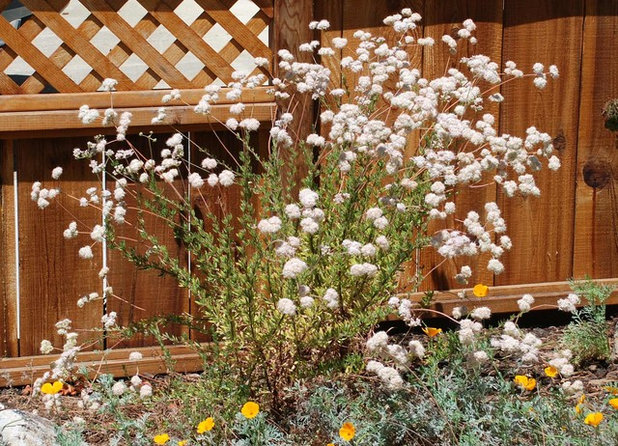
Pete Veilleux, East Bay Wilds
Botanical name: Eriogonum fasciculatumCommon name: California buckwheat
Origin: From Alameda County, California, south to northwestern Baja California and east to southwestern Utah and Arizona on dry slopes and in washes and canyons
Where it will grow: Hardy to 15 degrees Fahrenheit (USDA zones 5b to 10; find your zone)
Typical plant communities: Coastal sage scrub; chaparral; deserts below 8,000 feet
Water requirement: Little to moderate
Light requirement: Full sun to partial shade
Soil requirement: Adaptable; prefers well drained
Mature size: 2 to 4 feet tall and 4 to 6 feet wide; it can create a large colony from its bountiful seeds
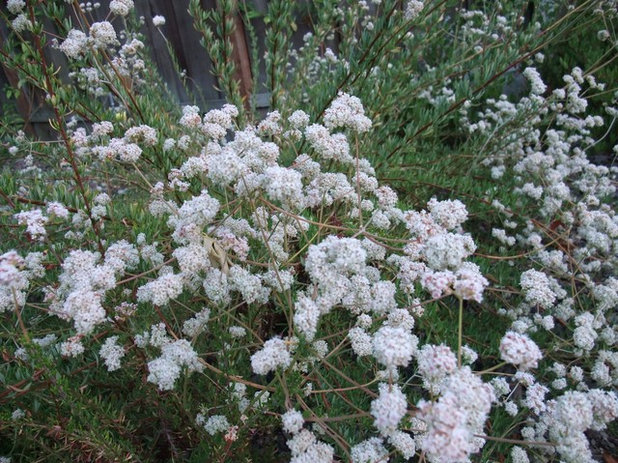
Renate Kempf
Benefits and tolerances: Stabilizes slopes; deer resistant; attracts pollinators, including butterflies and bees
Seasonal interest: Flowers in summer; seed heads in fall through winter
When to plant: It’s best to plant California natives in the fall, so they can put down their roots in the rainy season, but with care you can plant most natives at any time of the year.
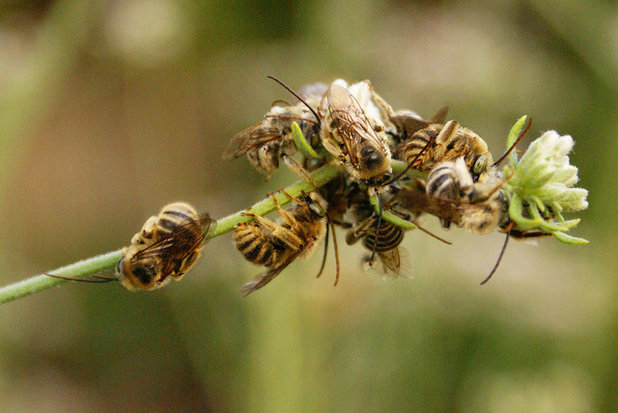
Debbie Ballentine
Wildlife value. California buckwheat is important for pollinators, as the nectar feeds them, and it attracts other beneficial insects. The seeds feed birds and mammals, and it provides cover for lots of critters.
Shown: Male Longhorn bees (
Melissodes sp) sleeping on California buckwheat
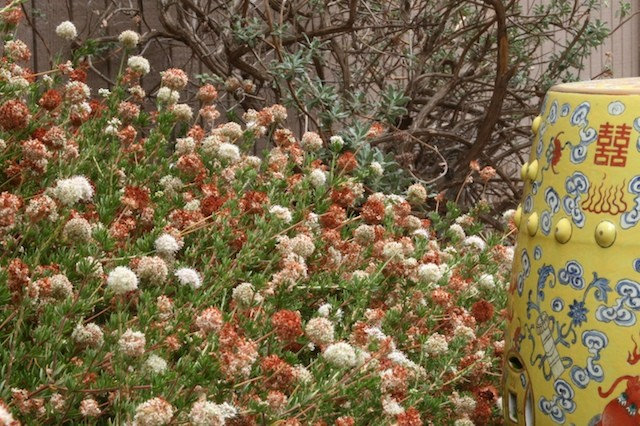
Renate Kempf
Distinguishing traits. This buckwheat has a pleasing mounded form, rosemary-like evergreen leaves, showy flowers in summer and beautiful rust-brown seed heads from fall through winter.
The seeds are food for wildlife and also give life to many volunteers under the mother plant. You can leave the seedlings as is to create a large mass of buckwheat, transplant them, give them to your gardening friends, easily rake and pull them out, and/or deadhead to reduce the seed load.
Shown: Flowers turning to rust-colored seed heads
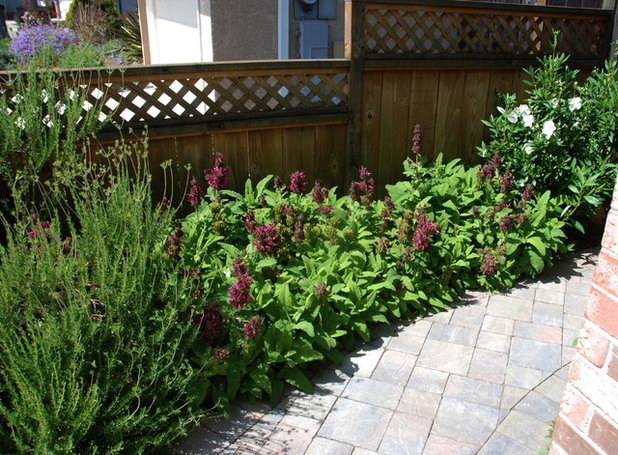
Pete Veilleux, East Bay Wilds
How to use it. Use California buckwheat in masses or drifts or mix it with other plants. Place it in the middle or front of a planting bed. If you’re not planting it in a mass or drift, give the plant plenty of room to grow — the rounded mound is gorgeous. I love to place this plant where I can watch the parade of pollinators.
Planting notes. With a deep taproot, this is a plant you don’t want to move once it’s been planted. The upside is that the taproot is the reason it’s drought tolerant.
Such an important and lovely plant desires a lot of attention — and it has received it. Two cultivars that grow lower, with a spreading habit, and are available at nurseries are
Eriogonum fasciculatum ‘Theodore Payne’ and
E. fasciculatum ‘Warriner Lytle’. My favorite is the heavily flowering variation
E. fasciculatum var.
foliolosum.
Shown: California buckwheat, hummingbird sage (
Salvia spathacea) and California bush anemone (
Carpenteria californica)





